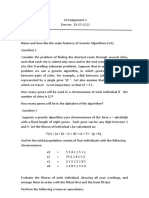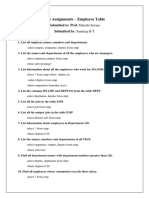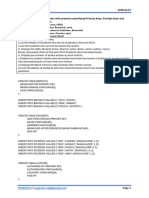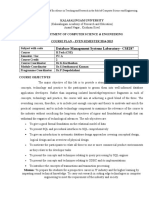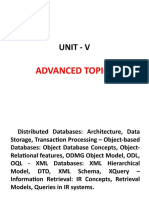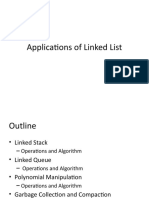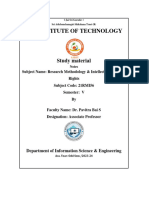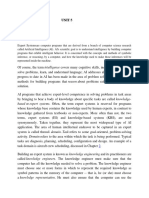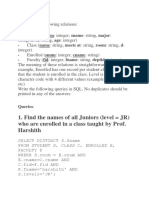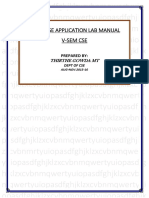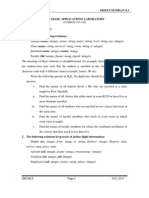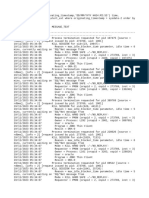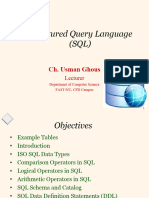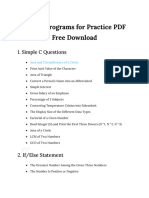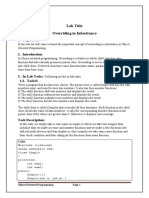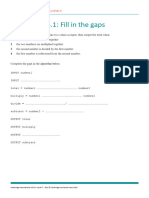0% found this document useful (0 votes)
342 views20 pagesDBMS LAB Programs For Mca
The following SQL queries are provided to answer questions about student, course, enrollment, and textbook data:
1. The names of juniors enrolled in a class taught by Prof. Harshith are returned.
2. The names of classes that meet in room R128 or have 5+ students enrolled are listed.
3. The name of the faculty member who teaches in every room is given as Harshith.
4. The names of faculty with combined enrollment of less than 5 students are provided.
Uploaded by
Shivam KumarCopyright
© Public Domain
We take content rights seriously. If you suspect this is your content, claim it here.
Available Formats
Download as PDF, TXT or read online on Scribd
0% found this document useful (0 votes)
342 views20 pagesDBMS LAB Programs For Mca
The following SQL queries are provided to answer questions about student, course, enrollment, and textbook data:
1. The names of juniors enrolled in a class taught by Prof. Harshith are returned.
2. The names of classes that meet in room R128 or have 5+ students enrolled are listed.
3. The name of the faculty member who teaches in every room is given as Harshith.
4. The names of faculty with combined enrollment of less than 5 students are provided.
Uploaded by
Shivam KumarCopyright
© Public Domain
We take content rights seriously. If you suspect this is your content, claim it here.
Available Formats
Download as PDF, TXT or read online on Scribd
/ 20




